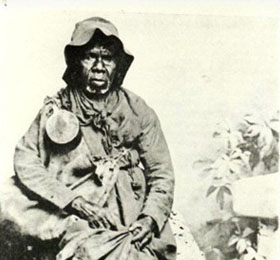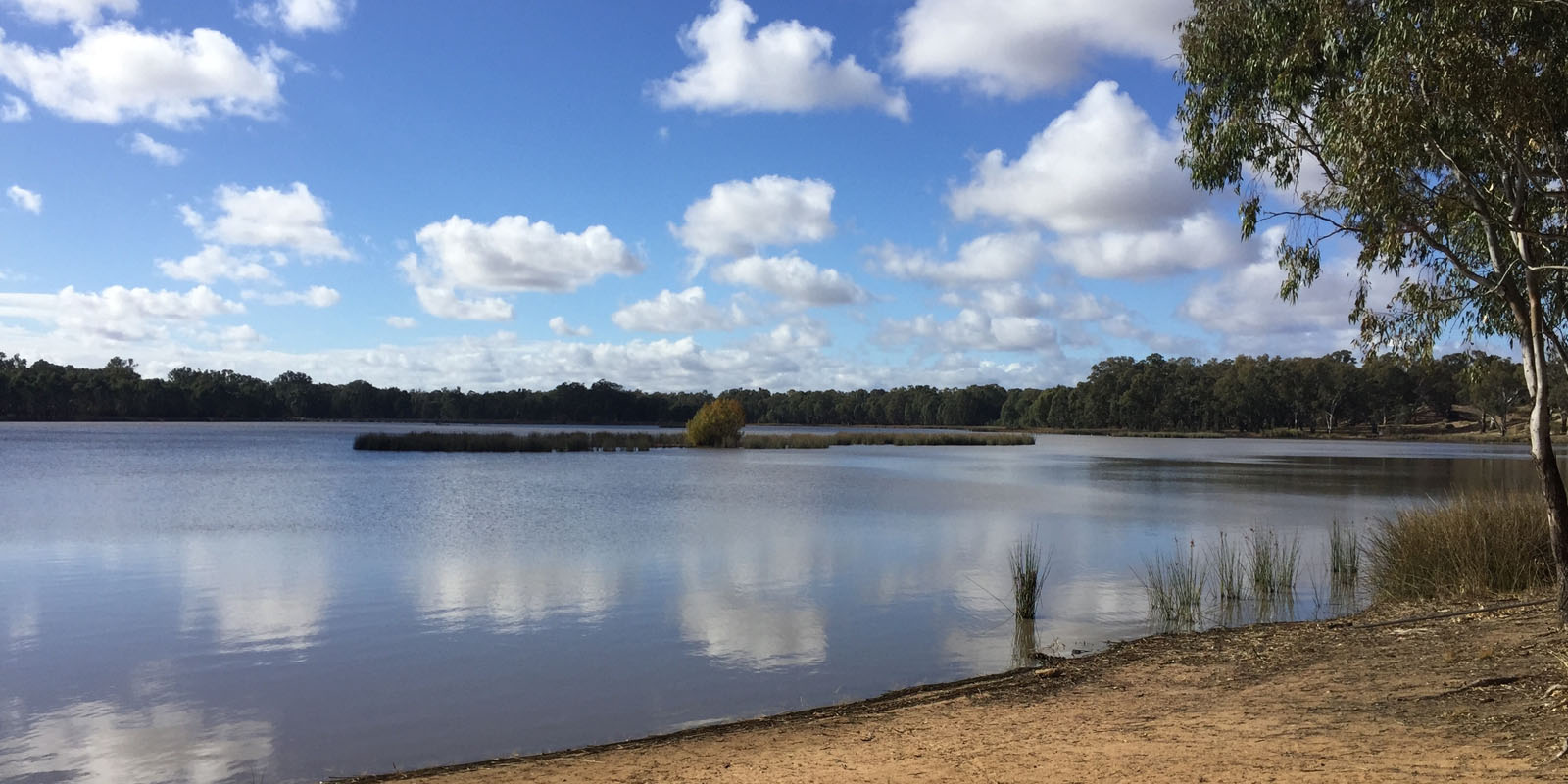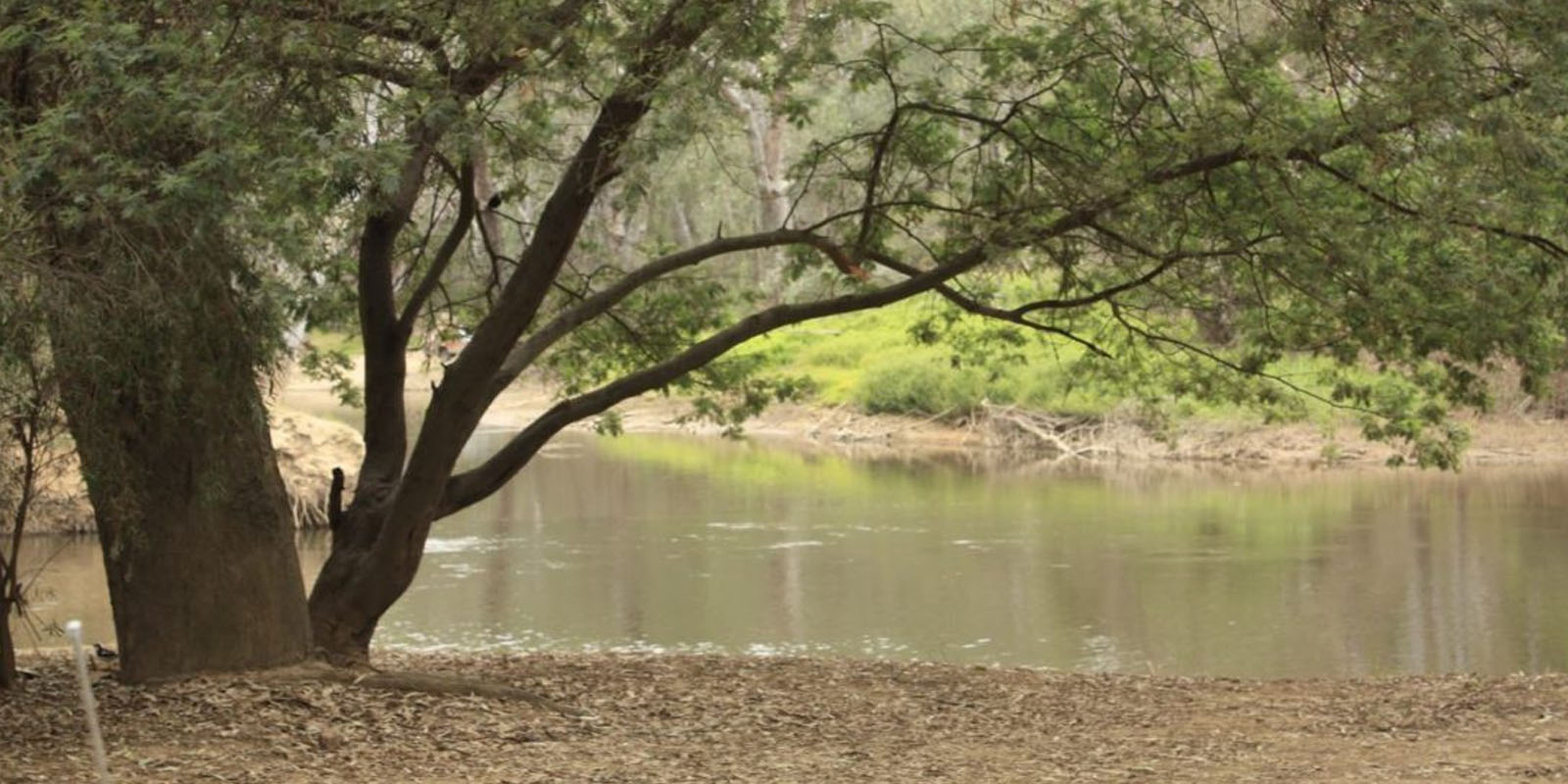A Bangerang woman who stayed true to her country.
This article was sourced from Aboriginal Victoria.

Aunty Mary Jane or Gunyuk Milawa was a Bangerang woman whose traditional life was broken by European settlement in Victoria, but who chose to maintain her contact with her country. She is thought to have been born around 1830 in the area now covered by the City of Wangaratta in north central Victoria. Non-Aboriginal pastoralists began to settle in this country around 1837.
It is not known what became of Aunty Mary Jane’s parents. However, she and her sister Luana went with Wiradjuri people to live at Wahgunyah or Lake Moodemere, near present day Rutherglen. Lake Moodemere was a traditional camping place and remained a semi-official reserve until it was formally announced as a permanent reserve in 1892. It remained a reserve until around 1937.


Lake Moodemere, where Aunty Mary and her sister Aunty Luana went to live with the Wiradjuri people. Image source: Explore Rutherglen.
Determination to remain on her own country
Aunty Mary Jane is said to have longed to return to her own country which she was able to do when she returned as a young woman to live on the banks of the Ovens River between Wangaratta and Milawa.
She was living at a time when there were several attempts to move Aboriginal Victorians onto missions and reserves. This was first attempted through the Aboriginal Protectorate system, which began in 1839. Under this system, a Protectorate Station for the Aboriginal people of the north central parts of Victoria was established at Mitchellstown and the Protector for the area tried to encourage Aboriginal people to move onto the station. From 1860, the Central Board for the Protection of Aborigines encouraged the movement of Victorian Aboriginal people onto one of the 6 major mission stations and reserves: Framlingham, Lake Condah, Lake Tyers, Ebenezer, Ramahyuck and Coranderrk.
By the Board’s own admission, however, many Aboriginal Victorians preferred to remain outside of the mission stations, many of them working for pastoralists. The government appointed local guardians in areas that were not close to mission stations. The guardians were able to distribute clothing, blankets and basic rations to Aboriginal people living in the area.


The Ovens River was a central part of Bangerang life. Image source: Visit Wangaratta.
Last of the Bangerang
In 1877 there were 10 Aboriginal men, 5 Aboriginal women and 1 Aboriginal child listed as living in the Wangaratta district. Perhaps Aunty Mary Jane was the last of this small group to remain in the Wangaratta area for she was called ‘the last of the Bangerang’ when she died in 1888. She was buried in the Wangaratta Cemetery. Aunty Mary Jane’s story was passed down by her sister Luana to her children and grandchildren. Bangerang Uncle Elder Freddie Dowling, Aunty Mary Jane’s great-great nephew, learned the story from his father and grandmother. In 1988, a century after her death, Uncle Freddie presented the City of Wangaratta with a plaque commemorating Aunty Mary Jane, as a reminder of her links with the land.
Aunty Mary Jane’s story was passed down by her sister Luana to her children and grandchildren.
Aunty Mary Jane’s story is also celebrated by a plaque dedicated to her memory on the Bullawah Cultural Trail which runs along the banks of the Ovens River in Wangaratta. The Trail was established in 2016 to celebrate Aboriginal culture and heritage and honour Aboriginal and non-Aboriginal leaders who have made a significant contribution to the local community. Through her life, Aunty Mary Jane showed determination to remain on her own country, despite the many forces at work to destroy her connection to her culture and traditional land. Government policies and the dispossession of land moved many Victorian Aboriginal people far from their own country.
Through her life, Aunty Mary Jane showed determination to remain on her own country
By 1871, it was reported that ‘tribal relations and family ties are much interfered with by the whites, who now occupy the whole colony’. In her determination to live her life on her own country, Aunty Mary Jane symbolises the spirit of resistance to this dispossession and a resolve to maintain connections to country, no matter what the cost.


Aunty Mary Jane’s story is also celebrated by a plaque dedicated to her memory on the Bullawah Cultural Trail which runs along the banks of the Ovens River in Wangaratta.
Aunty Mary Jane symbolises the spirit of resistance to this dispossession and a resolve to maintain connections to country, no matter what the cost.
